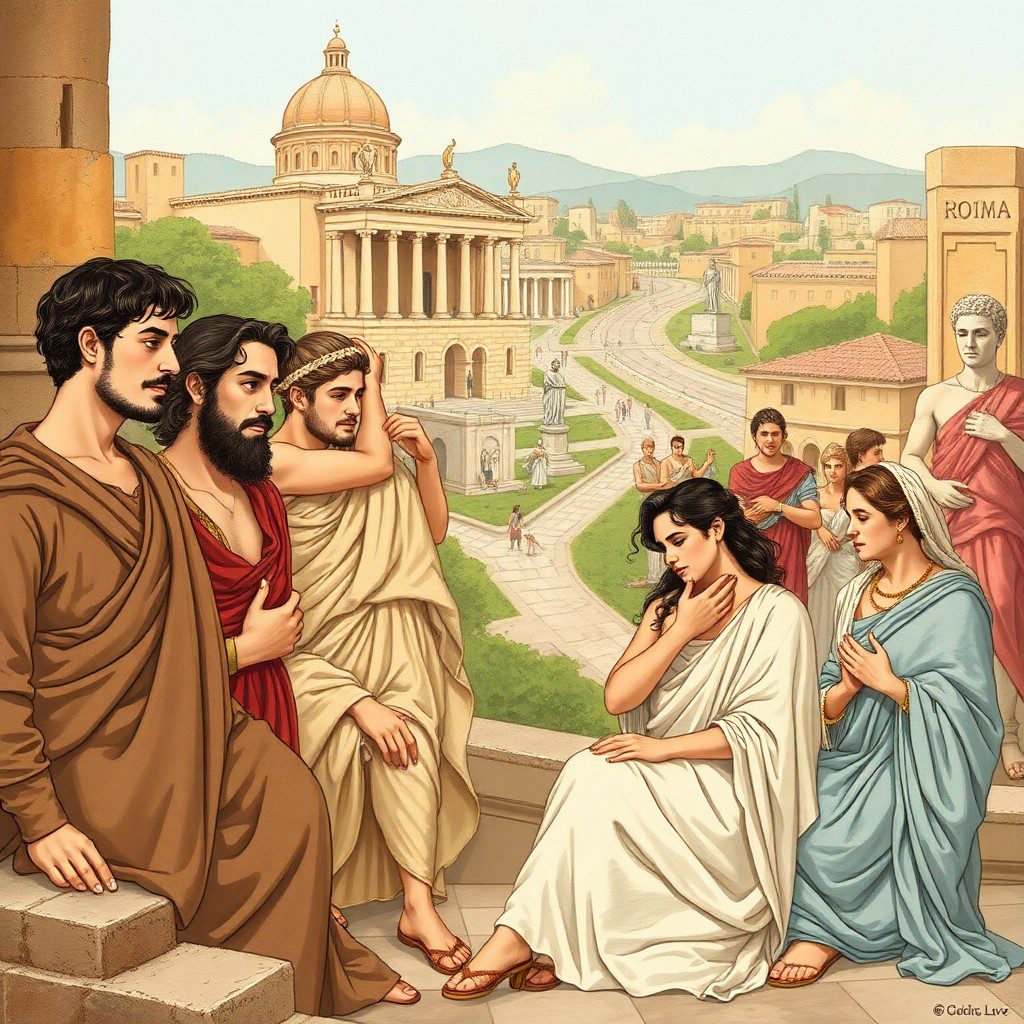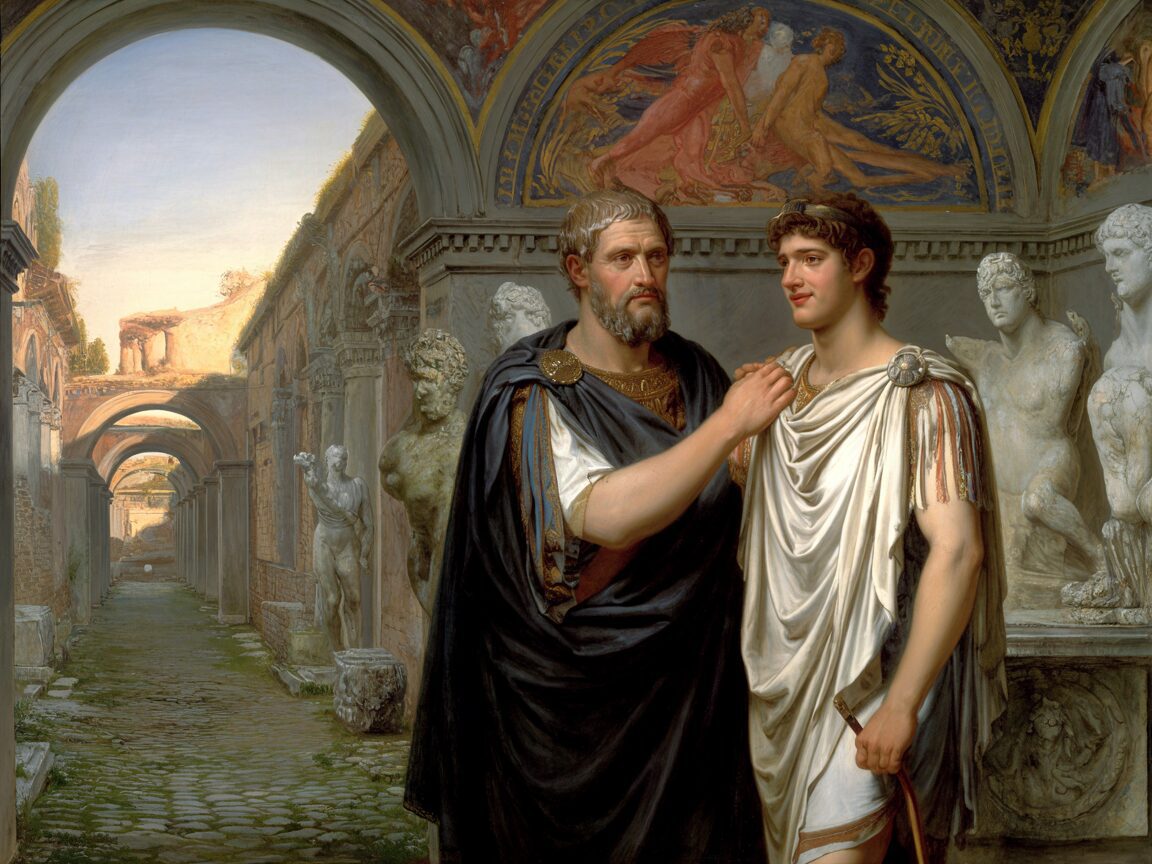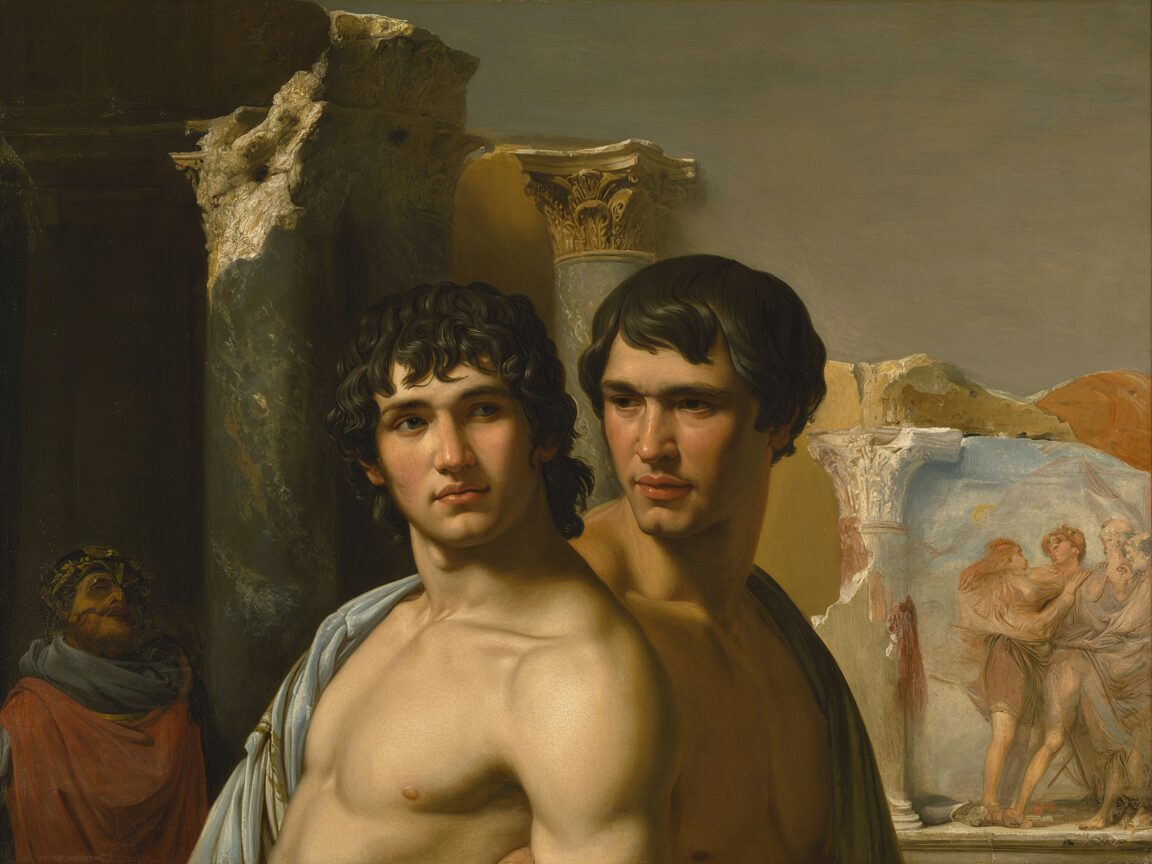Uncovering LGBTQ+ Histories goes beyond stereotypes to reveal the complex and diverse experiences of queer individuals in Ancient Rome. The significance of exploring these histories lies in understanding the multifaceted nature of LGBTQ+ lives within the Roman Empire.
Delving into LGBTQ+ histories in Ancient Rome unveils a rich tapestry of relationships and identities that challenge common misconceptions.
LGBTQ+ individuals in Ancient Rome are often oversimplified or sensationalized in modern narratives, neglecting the nuances of their lived experiences.
It is crucial to move beyond simplistic views and embrace the varied and authentic queer experiences that existed within the cultural framework of Ancient Rome.
Understanding Gender and Sexuality in Ancient Rome
To truly understand the complexities of queer experiences in Roman culture, we need to explore the specific norms surrounding gender roles and sexuality during that time. These norms were quite different from the modern LGBTQ+ identities we know today.
1. Gender Norms in Ancient Rome
Roman gender roles were deeply ingrained in societal structures, with clear distinctions between male and female roles:
- Women were primarily expected to fulfill domestic duties and bear children.
- Men held positions of power in public life.
2. Sexuality in Ancient Rome
Sexuality in Ancient Rome was not viewed through the lens of sexual orientation as understood today but was often intertwined with social hierarchies:
- Relationships were influenced by power dynamics and social status rather than solely based on romantic or sexual attraction.
By examining these societal norms, we can appreciate how gender and sexuality intersected with various aspects of Roman life:
3. Social Hierarchies
Social hierarchies played a significant role in shaping relationships and gender roles:
- Power differentials often influenced the dynamics of intimate connections, including same-sex relationships.
Understanding these foundational aspects of Roman culture is crucial to unraveling the diverse expressions of gender and sexuality that existed beyond the scope of modern LGBTQ+ identities.

The Case of Antinous: Recognition Beyond Stereotypes
The relationship between Antinous and Emperor Hadrian stands out as one of the most famous examples of same-sex love in Ancient Rome, yet it transcends common stereotypes about queer relationships in that era. Antinous was a young Greek man who captured the affection of Hadrian, one of Rome’s most admired emperors. Their bond was deeply personal and public, marked by Hadrian’s profound grief when Antinous died under mysterious circumstances during a journey in Egypt.
A Unique Response to Loss
Hadrian’s response to Antinous’s death was unprecedented. He initiated the deification of Antinous, elevating him to divine status—a rare honor usually reserved for emperors or gods. A cult dedicated to Antinous spread throughout the empire, with statues, coins, and temples commemorating him. This act reflects more than personal loss; it reveals a level of social acceptance and reverence for same-sex love that challenges simplistic portrayals of Roman attitudes.
Significance of Deification
Deification in Ancient Rome symbolized ultimate respect and immortalization. By deifying Antinous, Hadrian sent a message that same-sex relationships could hold profound cultural and spiritual significance. This contradicts the notion that such relationships were always secretive or marginalized.
Visibility and Honor
The story of Antinous Hadrian is a powerful example showing how same-sex relationships in Ancient Rome could achieve visibility and honor within the highest echelons of society. It encourages reconsideration of queer histories beyond reductive assumptions, highlighting complexity in Roman cultural values around love, loss, and divinity.
Roman Achievements and Cultural Exchange
Moreover, this narrative is set against the backdrop of a society known for its remarkable achievements, including engineering feats that changed the world. The significance of Roman engineering lies in its capacity to connect far-flung regions, ensuring effective governance and cultural exchange. Their techniques had a lasting impact on future generations, serving as a foundation for contemporary infrastructure systems.

Diverse Expressions of Male Relationships in Ancient Rome
In ancient Rome, male-male relationships encompassed a wide array of dynamics beyond romantic or sexual partnerships. Mentorship was a common practice where older men would guide and support younger men in various aspects of life, including education and career advancement. These relationships were often influenced by social hierarchies and power dynamics, with the mentor holding authority over the mentee.
Moreover, friendships between men could also involve emotional intimacy and mutual support, reflecting a deep bond that went beyond societal norms. While some relationships did involve romantic or sexual elements, it is essential to recognize that not all male-male interactions were driven by erotic desire.
Challenging the notion that all these relationships were exploitative or predatory is crucial in understanding the complexities of Roman society. By acknowledging the multifaceted nature of male relationships in ancient Rome, we can move beyond simplistic stereotypes and appreciate the diverse expressions of love, friendship, and mentorship that existed within LGBTQ+ histories of that era.
The Influence of Social Context
It’s important to note that these relationships were often shaped by the broader social context. For instance, daily life in ancient Rome was vastly different for various social classes. This class divide influenced not just mentor-mentee relationships but also friendships and romantic involvements.
Additionally, the spectacle of ancient Rome, with its gladiators, chariot races, and theaters, played a significant role in shaping social interactions and political authority. These events were not merely entertainment; they had profound effects on societal structures and relationships.
Enriching Exploration through Immersive Experiences
The exploration of these themes can be further enriched through immersive experiences such as role-playing games, which allow individuals to step into the shoes of historical figures and better understand their experiences.

Gender Non-Conformity and Transgender Roles in Roman Culture
Ancient Rome had various gender expressions that don’t fit neatly into modern classifications. There is evidence of transgender individuals in Ancient Rome and gender non-conforming Romans who held distinct social and cultural roles, often acknowledged within their communities even though they didn’t conform to binary gender norms.
Recognizing Diverse Gender Identities
Roman society recognized people who embraced identities or roles beyond conventional male and female categories. These included:
- The Galli: Priests of the goddess Cybele who often wore feminine clothing and displayed feminine behaviors while performing rituals that blurred gender boundaries. Such practices were part of a larger religious system intertwined with every aspect of Roman life.
- Effeminati: Men described in legal and literary sources as exhibiting behaviors or appearances associated with femininity. While sometimes facing social stigma, they also occupied specific social niches, reflecting how Roman law dealt with such non-conformities.
- Cross-dressing performers: Entertainers who challenged established gender norms within public spectacles.
These culturally specific roles demonstrate that Roman concepts of gender were fluid in certain contexts and not strictly limited to biological sex alone. Although these expressions do not perfectly align with contemporary definitions of transgender identity, they reveal a complex tapestry of gender variance embedded in Roman culture.
The Intersection of Gender Non-Conformity and LGBTQ+ Histories
Gender non-conformity intersected with broader LGBTQ+ histories by expanding the range of recognized identities and experiences. These expressions contributed to a dynamic understanding of selfhood encompassing both sexual desire and gender performance. Recognition—whether through religious office, social interactions, or artistic portrayal—suggests that cultural gender roles in Rome allowed for more diversity than often assumed.
Exploring these intricacies uncovers how ancient societies navigated identity beyond rigid binaries. It challenges modern readers to reconsider the historical depth of gender non-conformity and its influence on ongoing discussions about LGBTQ+ heritage worldwide.
The Influence of the Roman Empire on Gender Expressions
The rise and fall of the Roman Empire, characterized by its vast reach and diverse cultures, significantly shaped these gender expressions. Furthermore, the architectural innovations of the Romans, evident in their masterpieces of ancient engineering, served not only functional purposes but also symbolized their cultural identity. Additionally, the Roman roads facilitated the dissemination of these varied cultural practices across extensive territories.

Women and Queer Histories in Ancient Rome
The role of women in LGBTQ+ histories of Ancient Rome is often overlooked, yet their stories provide valuable insights into the complexities of gender and sexuality in Roman society.
Examine Defiance of Gender Norms:
Women in Ancient Rome faced strict societal expectations regarding gender roles and behavior. Despite these constraints, some women defied conventional norms by engaging in same-sex relationships or expressing non-heteronormative identities. These examples challenge the notion of a rigidly defined gender binary in Roman culture, a concept that can be further explored in resources such as this introduction to exploring gender diversity in the ancient world.
Intersectionality of Gender and Sexuality:
The experiences of women intersecting with LGBTQ+ histories in Rome highlight the interconnected nature of gender and sexuality. Women navigating diverse forms of relationships and identities in Roman society offer a nuanced understanding of how these aspects intertwine and influence one another.
By exploring the stories of marginalized women in Ancient Rome who navigated complex gender norms and societal expectations, we gain a deeper appreciation for the diversity of queer experiences within Roman culture. These narratives not only challenge traditional views of gender and sexuality but also enrich our understanding of the multifaceted nature of LGBTQ+ histories beyond stereotypes.
The legal framework surrounding Roman women’s rights significantly influenced their societal roles and opportunities. This intricate legal landscape, shaped by landmark laws such as the Twelve Tables, offers a deeper understanding of women’s experiences during this period.
Additionally, the legacy of Ancient Rome continues to shape Western civilization today. From its legal systems, which laid the groundwork for many modern laws (Roman Law’s impact), to its cultural influences, the story of Rome is not merely one of conquest and expansion; it is also a tale of innovation, governance, and cultural evolution that has left an indelible mark on the world.
Challenging Misconceptions Through Texts and Artifacts
Analyzing ancient texts and material culture provides valuable insights into the presence of same-sex love and desire in Roman society, dispelling reductive stereotypes that overshadow LGBTQ+ histories. These sources not only shed light on the diverse expressions of gender and sexuality but also emphasize the coexistence of both heterosexual and queer relationships in historical narratives.
Ancient Texts Revealing Queer Desire
- Ancient Roman literature, such as the works of poets like Catullus and Martial, often depicted same-sex love and desire openly.
- Dialogues from philosophical writings like those of Plato also hint at acceptance of diverse forms of relationships beyond traditional norms.
Artifacts Reflecting LGBTQ+ Life in Rome
- Artifacts like pottery depicting scenes of intimacy between same-sex couples challenge misconceptions about the nature of ancient Roman relationships.
- Statues and frescoes found in Pompeii and Herculaneum offer visual representations of love and desire that transcend gender boundaries.
Historical Evidence Countering Stereotypes
- The existence of legal documents referencing same-sex marriages in ancient Rome contradicts the notion that queer relationships were taboo or hidden.
- Inscriptions on tombs commemorating same-sex partners attest to the public acknowledgment of these relationships in Roman society.
By delving into these textual and material sources, we can uncover a more nuanced understanding of LGBTQ+ histories in Ancient Rome that goes beyond simplistic portrayals. This exploration highlights the rich tapestry of diverse identities and relationships that existed within this ancient civilization, a civilization whose mythology continues to influence modern culture.
Conclusion
Reframing LGBTQ+ history requires moving beyond simplistic stereotypes to appreciate the complex queer past of Rome. Ancient Roman society, a period marked by significant events like the birth of the Roman Republic, displayed a rich tapestry of gender expressions and sexual relationships that do not fit neatly into modern categories. Recognizing this complexity helps you understand how individuals navigated power, affection, and identity in ways unique to their cultural context.
Key takeaways for embracing this nuanced perspective:
- Ancient LGBTQ+ lives were multifaceted, shaped by social hierarchies and cultural norms rather than fixed identities.
- Same-sex love and desire coexisted with heterosexual relationships, challenging binary assumptions.
- Figures like Antinous demonstrate that same-sex partnerships could be publicly revered, not just hidden or stigmatized.
- Gender non-conformity had recognized roles in Roman culture, expanding the scope of queer histories beyond male-focused narratives.
- Women’s experiences in queer contexts reveal intersectional layers often overlooked.
Uncovering LGBTQ+ histories in Ancient Rome beyond stereotypes enriches our understanding of human diversity across time. This approach influences modern scholarship by encouraging:
- Critical examination of sources without imposing present-day frameworks.
- Inclusion of marginalized voices and identities within historical narratives.
- A broader definition of what constitutes queer existence in the past.
Engaging with these ideas invites you to rethink LGBTQ+ history as an evolving story—one that honors complexity and challenges reductive interpretations for a more authentic appreciation of the ancient world. The historical significance of figures like Scipio Africanus, who changed the course of history during his time, further illustrates the intricate weave of personal identity and societal roles in ancient Rome.

